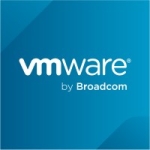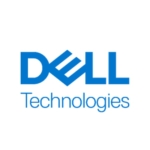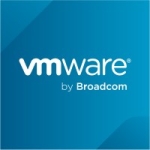What is our primary use case?
We have a lot of servers. Previously, they used to be physical servers. Managing all those physical servers was difficult. Many times hardware used to fail and there was a disruption of services. After we moved to Nutanix Cloud Infrastructure, life got a lot easier. We have deployed more than 80 VMs in a cluster.
We have many homegrown applications that we run on Nutanix. We have a customized web portal and applications. They are customized for our business.
How has it helped my organization?
Nutanix NCI’s features help our organization reduce downtime. We use RA3 stuff in our clusters. If there is any issue with the hardware, node, or something else, my cluster is up and running. Over these three years, we have probably upgraded the Nutanix software twice or thrice. We had to restart nodes multiple times during this upgrade, and none of our users felt that something was going on. They did not have any issues related to slow response or no response from the applications while we had to shut down one of the nodes, put it into maintenance, apply the patches, bring the node up, and then make it join the cluster. It was smooth.
It has helped with consolidation. Previously, we had more than 40 servers, and now we have only 6 nodes. It is a lot easier to manage these 6 nodes. With the hardware, if something goes wrong, such as the hard disk showing amber, I have to create a ticket, share the logs, and then the engineer will come and check. After that, the part will come. It can come at 2 AM or 4 AM. We have to be physically present. They will shut down the server, take out that hard disk, and replace the hard disk, and then we will have to bring up the service. We have to spend a lot of time.
They have a product for database management called Nutanix Era, but we do not use that. We have not deployed it over here. We primarily use this HCI for making VMs and running web applications and their databases. We have migrated database services but not through the Nutanix Era. We have our own system, so we used that. The purpose of migration was to have a single pane of glass for management. The downtime is less, and the service becomes a smooth service. The users who are using the service are happy.
What is most valuable?
A lot of features are there, but for us, on the server administration side, creating a clone of the VM is valuable because many times, we have to deploy security patches. For deploying these patches, it helps to have a clone so that if something goes wrong, we can discard that VM and put back the clone VM. That is a very cool feature.
What needs improvement?
Usually, there are separate administration teams that take care of servers, but in our organization, servers are usually looked after by the application owner. However, the application owners cannot reinstall the software, OS, and other things. That only aligns with the role of the HCI administrator. If these rights can be provided, it will be very easy. Previously, it was there, but after certain updates, we found that they have withdrawn those services. For example, you requested a VM, and based on the business use case, I approved it and gave you a bare-metal server. Now you are the owner of that particular VM, so whatever you need, you should be able to do over there, but currently, you have to request me for the installation of the OS that you need, and I have to do it. It is an overhead for the HCI administrator. If that can be offloaded to the VM owners, that will be much easier for us. I have already shared this feedback with Nutanix.
For how long have I used the solution?
I have been working with this solution for more than two years.
What do I think about the stability of the solution?
It is stable. Its reliability is very good. In the last three to four years, we have not faced any outages. It is smooth on the hardware side and the software side.
What do I think about the scalability of the solution?
We first thought of deploying about 40 VMs, and now, we are running more than 80 VMs, so a lot of scalability options are there. If you have a smooth augmentation, all the capabilities are there.
We have plans to use our present data center for DR. We will build a new DC, and we will be deploying another set of Nutanix clusters over there.
How are customer service and support?
Their support is very good. Whenever we found any issue, we raised a ticket, and there was always an expert who had discussions with us and helped us. If required, they do a remote session and help us out. I would rate them a ten out of ten.
How would you rate customer service and support?
Which solution did I use previously and why did I switch?
I have not worked with any similar solution previously.
How was the initial setup?
In terms of the deployment model, we have an on-prem cloud. In terms of the initial setup, the Nutanix team took care of building the clusters. For such a solution, we create a service request, and they set up the entire cluster. After the cluster is ready, they hand it over to us for creating VMs and migrating applications to those VMs.
Its maintenance is easy. You can do it with a few clicks. There are interfaces, and you need to do checks for those interfaces. You need to look for the long-term support version and follow the procedure. Overall, it is smooth.
What about the implementation team?
For the deployment and initial setup, there is usually one person from Nutanix. From the hardware vendor team, there are usually one or two people, and then there are two people from our side. One is from the software side, and one is from the network side for IP allocations and other related things.
Which other solutions did I evaluate?
We also evaluated VMware, but at that time, VMware was not mature, and it was not within our requirements. That was the reason why we chose this solution. Another reason was that our technical evaluation team found Nutanix Cloud Infrastructure to be more suitable for our architecture.
What other advice do I have?
Overall, I would rate Nutanix Cloud Infrastructure a nine out of ten.
Disclosure: My company does not have a business relationship with this vendor other than being a customer.



















We’ve been using Nutanix Cloud Infrastructure for software development with Kubernetes for about a month. The cloud-based ecosystem helps reduce downtime by 50%, streamlining application consolidation and processing. Provisioning and live upgrades are easy, and it’s beginner-friendly. However, error reporting and dashboard data reflection need improvement, and we’d like more Kubernetes info in the dashboard. While it’s more cost-effective than VMware, we haven't yet seen ROI, but there are significant time savings. The solution scales well and is easy to manage with minimal maintenance. Overall, I’d rate it 8/10 due to its good features, but improvements in reporting are needed.